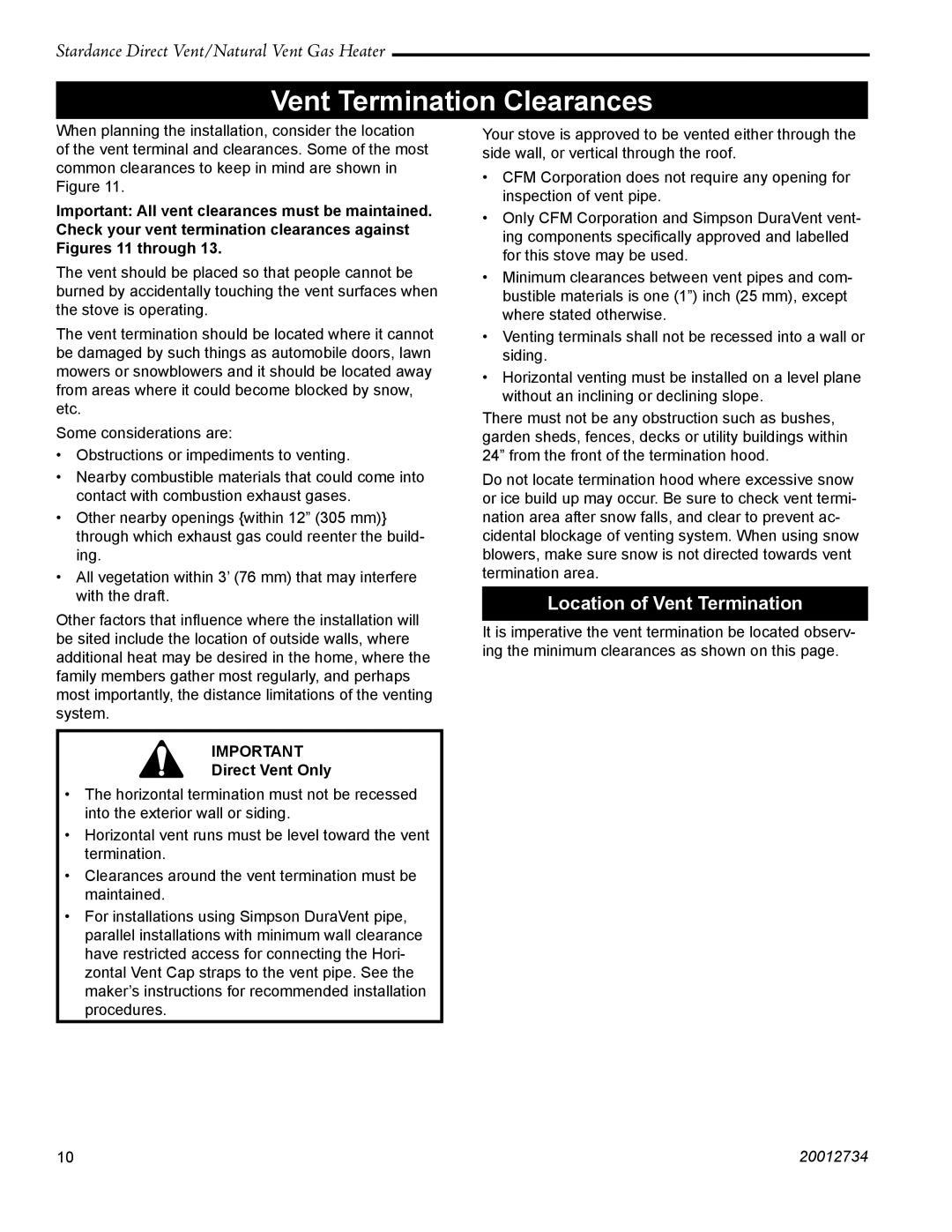SDDVT specifications
Vermont Casting's SDDVT, or the Signature Series Direct Vent Technology, represents a remarkable blend of design, efficiency, and functionality in the world of high-performance heating appliances. Known for its commitment to craftsmanship, Vermont Casting has long been synonymous with quality, and the SDDVT is no exception.One of the standout features of the SDDVT is its advanced direct venting capability. This system allows for efficient venting of combustion gases directly outside, minimizing the risk of backdrafting and ensuring optimal indoor air quality. It draws air from the outside for combustion, creating a more controlled environment that enhances both efficiency and safety. Homeowners can rest easy knowing that the SDDVT provides a reliable heating solution while protecting indoor air quality.
Another significant aspect of the SDDVT is its high-efficiency performance. With an impressive Annual Fuel Utilization Efficiency (AFUE) rating, the SDDVT maximizes heat output while minimizing fuel consumption. This efficiency translates to lower energy bills and a reduced carbon footprint, making it an environmentally friendly choice for heating. The unit is designed to operate effectively even in extremely cold temperatures, ensuring comfort throughout the winter months.
The SDDVT also boasts an array of customizable options that appeal to a wide range of aesthetic preferences. Available in various finishes and styles, including traditional cast iron and sleek modern designs, homeowners can select a model that complements their decor. The unit features a large viewing glass that provides an unobstructed view of the flames, creating a cozy ambiance that enhances the living space.
Incorporating cutting-edge technology, the SDDVT includes electronic ignition and advanced control systems, allowing users to easily manage their heating preferences. The integration of smart technology enables compatibility with home automation systems, giving users added convenience and control.
Overall, Vermont Casting's SDDVT is an exemplary heating solution characterized by its innovative direct venting technology, high efficiency, and customizable design options. With a focus on quality and performance, this unit exemplifies the brand's dedication to providing sustainable and effective heating solutions tailored to modern living. Whether for new construction or retrofitting existing spaces, the SDDVT stands as a premier choice for comfort and style.

